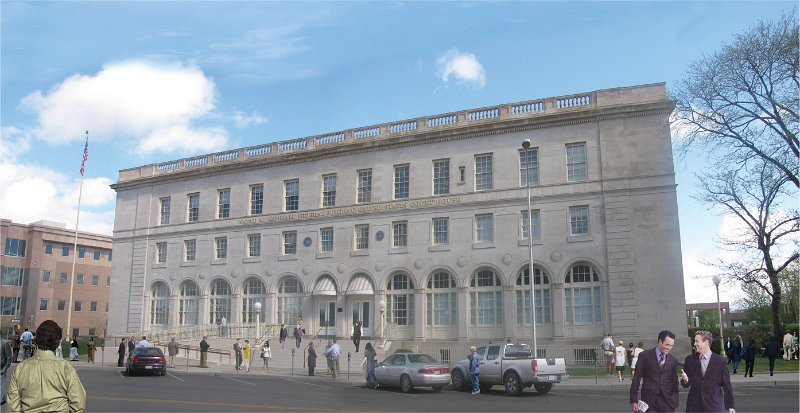
GRAND JUNCTION, Colo. — The General Services Administration recently unveiled plans to turn the 92-year-old Wayne Aspinall Federal Building and Courthouse in Grand Junction, Colo. into the country’s first net-zero energy usage historic building.
“This building is on track to be the first of its kind in the entire nation,” said GSA Administrator Martha N. Johnson. “GSA will partner with regional businesses to maintain the historic features that make the building unique, while investing in sustainable technologies to make it one of the most energy- and cost-efficient buildings in the country. The result will be something special that the entire country can look to as a model of innovation and efficiency.”
The building design is aiming to achieve net-zero energy usage, meaning the building will produce as much energy as it consumes in a year. If the goal is reached, this would be the country’s first net-zero building on the National Register of Historic Places. The project is also targeting LEED platinum certification from the U.S. Green Building Council.
“People don’t usually associate innovation with the federal government. But our industry does. We know GSA innovates and partners with the private sector for results,” said Paul Westlake, managing principal at Westlake Reed Leskosky, an architecture and engineering firm. “GSA drives norms that have a ripple effect throughout the private sector.”
GSA will install an energy-saving geothermal heating and cooling system that uses the warmth or cold of the ground to control temperature, and a solar panel array that is projected to generate enough energy to balance out the electrical demand of the building. Additional energy produced in excess of the building’s needs will be exported to Grand Junction’s electrical grid. The building will also feature state-of-the-art fluorescent light fixtures with wireless controls to adjust lighting to respond to natural light levels, and storm windows with solar control film to reduce demand on heating and cooling.
“These renovations will ensure that the building is running at top efficiency,” said Johnson. “Ultimately, sustainability is about no waste. And no waste ensures that we are being as efficient as possible with taxpayer dollars.”
Government buildings that are renovated with sustainable technologies often see double-digit energy reductions, cumulatively saving taxpayers millions of dollars each year, she said.


 Join our thriving community of 70,000+ superintendents and trade professionals on LinkedIn!
Join our thriving community of 70,000+ superintendents and trade professionals on LinkedIn! Search our job board for your next opportunity, or post an opening within your company.
Search our job board for your next opportunity, or post an opening within your company. Subscribe to our monthly
Construction Superintendent eNewsletter and stay current.
Subscribe to our monthly
Construction Superintendent eNewsletter and stay current.